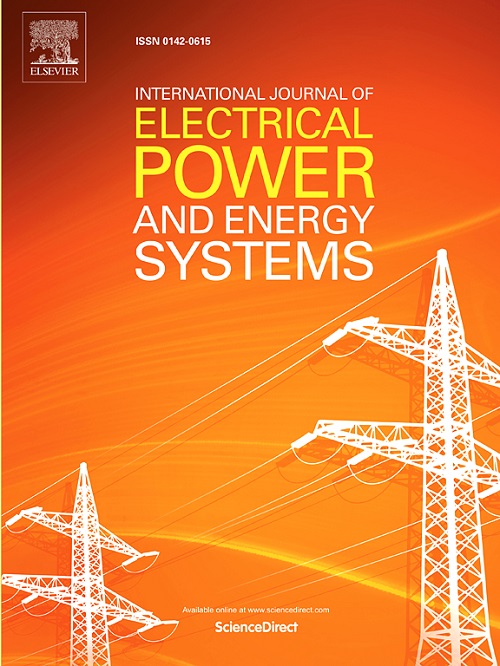TFTformer:一种新的基于变压器的短期负荷预测模型
IF 5
2区 工程技术
Q1 ENGINEERING, ELECTRICAL & ELECTRONIC
International Journal of Electrical Power & Energy Systems
Pub Date : 2025-03-04
DOI:10.1016/j.ijepes.2025.110549
引用次数: 0
摘要
电力负荷预测对电力系统的有效运行和规划至关重要。由于Transformer模型具有独特的注意机制和提取数据相关性的能力,因此最近的研究已将其用于预测。然而,这些模型在集成各种数据类型和捕获长期依赖关系方面面临挑战。为了解决这些限制,本研究提出了一种TFTformer,一种基于变压器的神经网络,旨在提高负荷预测模型的准确性和通用性。TFTformer结合了针对天气、时间和负载数据的转置特征嵌入,以更准确地捕捉它们的独特特征。线性变换层后嵌入改进了特征表示,跨序列对齐和标准化特征,从而提高了模式识别。此外,在Transformer的编码器中集成了一个时序卷积网络,使用因果卷积和扩展来适应具有扩展接受域的数据的顺序性质。通过使用来自比利时、新西兰和澳大利亚五个州的负载数据集,与几种最先进的方法进行比较研究,证明了TFTformer的有效性。结果表明,TFTformer在不同位置实现了显著的MSE改进,比大多数模型提高了50%以上,比CARD提高了42%,比iFlowformer和iReformer提高了16%-17%。此外,进行方差分析来评估TFTformer的每个组成部分的影响。基于shap的可解释性分析,利用代理模型阐明了TFTformer的决策过程,强调了时间因素和天气特征在其预测中的关键作用。本文章由计算机程序翻译,如有差异,请以英文原文为准。
TFTformer: A novel transformer based model for short-term load forecasting
Electrical load forecasting is essential for the efficient operation and planning of power systems. Recent studies have employed Transformer models in forecasting due to their unique attention mechanisms and ability to extract correlations in data. However, these models face challenges in integrating varied data types and capturing long-term dependencies. To address these limitations, this study proposes a TFTformer, a transformer-based neural network designed to enhance the accuracy and generalisability of load forecasting models. The TFTformer incorporates transposed feature-specific embeddings for weather, time, and load data to more accurately capture their unique characteristics. A linear transformation layer post embedding improves feature representation, aligning and standardising features across sequences for improved pattern recognition. Additionally, a Temporal Convolutional Network is integrated within the Transformer’s encoder, employing causal convolutions and dilation to adapt to the sequential nature of data with an expanded receptive field. The effectiveness of the TFTformer is demonstrated through a comparative study against several state-of-the-art methods using load datasets from Belgium, New Zealand, and five Australian states. The results demonstrate that the TFTformer achieves significant MSE improvements across different locations, with over 50% improvement over most models, 42% over CARD, and 16%–17% improvement compared to iFlowformer and iReformer. Furthermore, an Analysis of Variance is conducted to evaluate the impact of each component of the TFTformer. A SHAP-based interpretability analysis, using surrogate models, is conducted to elucidate the decision-making process of TFTformer, highlighting the critical role of time factors and weather features in its predictions.
求助全文
通过发布文献求助,成功后即可免费获取论文全文。
去求助
来源期刊
CiteScore
12.10
自引率
17.30%
发文量
1022
审稿时长
51 days
期刊介绍:
The journal covers theoretical developments in electrical power and energy systems and their applications. The coverage embraces: generation and network planning; reliability; long and short term operation; expert systems; neural networks; object oriented systems; system control centres; database and information systems; stock and parameter estimation; system security and adequacy; network theory, modelling and computation; small and large system dynamics; dynamic model identification; on-line control including load and switching control; protection; distribution systems; energy economics; impact of non-conventional systems; and man-machine interfaces.
As well as original research papers, the journal publishes short contributions, book reviews and conference reports. All papers are peer-reviewed by at least two referees.

 求助内容:
求助内容: 应助结果提醒方式:
应助结果提醒方式:


